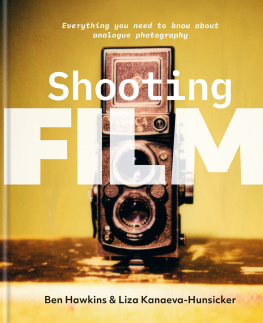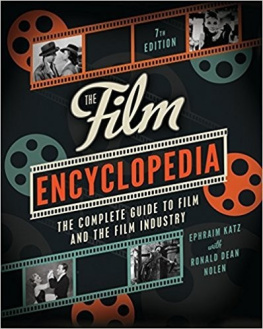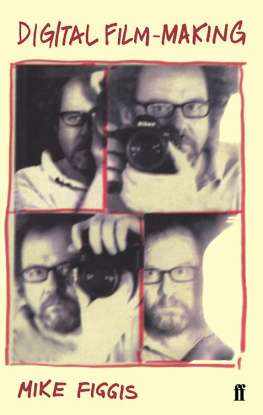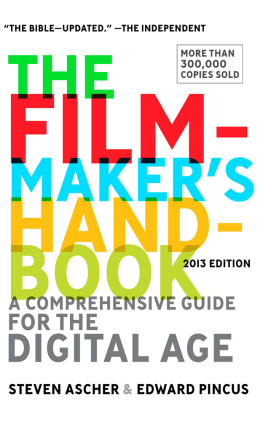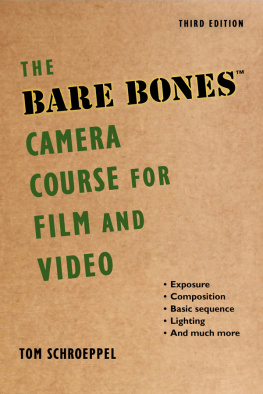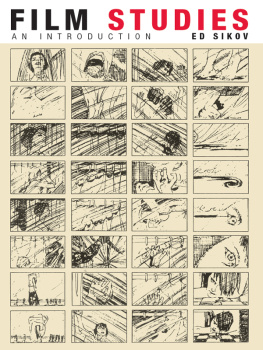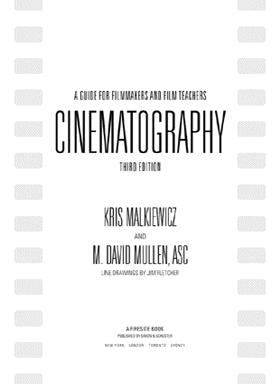
OTHER BOOKS BY KRIS MALKIEWICZ
Film Lighting: Talks with Hollywoods Cinematographers and Gaffers

FIRESIDE
Rockefeller Center
1230 Avenue of the Americas
New York, NY 10020
www.SimonandSchuster.com
Copyright 1973, 1989, 2005 by Simon & Schuster, Inc.
Copyright renewed 2001
All rights reserved, including the right of reproduction in whole or in part in any form.
Revised Fireside Edition 2005
FIRESIDE and colophon are registered trademarks of Simon & Schuster, Inc.
For information regarding special discounts for bulk purchases, please contact Simon & Schuster Special Sales at 1-800-456-6798 or business@simonandschuster.com
Designed by Ruth Lee Mui
Manufactured in the United States of America
1 3 5 7 9 10 8 6 4 2
Library of Congress Cataloging-in-Publication Data is available
ISBN-13: 978-0-7432-6438-9
ISBN-10: 0-7432-6438-X
eISBN-13: 978-1-4391-0562-7
ACKNOWLEDGMENTS
We wish to thank Bob Rogers, whose collaboration was fundamental in the realization of the first edition of this book. We would also like to thank several friends whose advice and encouragement contributed to the first edition: Brian Moore, Pat ONeill, Haskell Wexler, Don Worthen, Frank Stokes, David Smith, Roy Findlon, and Milan Chupurdija.
We are deeply grateful for the help given by several generous people in the preparation of the second edition. Our thanks go to Francisco Menendez for his editorial help, and to Benjamin Bergery, Myron Emery, Grant Loucks, Larry Roberts, and Craig Smith for their expertise in the various areas of filmmaking.
For this third edition, we would also like to thank Geoff Boyle and his Cinematography Mailing List (CML), Ed Coleman, Lisle Foote, Mitch Gross, Annette Hobday, Bill Hogan, Jeff Kreines, Mike Most, Matt Nicolay, Chip Ritter, Craig Smith, Ira Tiffen, and Mark Weingartner.
Finally, we are grateful to the manufacturers, suppliers, and laboratories that contributed photographs, charts, and information.
CONTENTS
PREFACE TO THE THIRD EDITION
Welcome to the Digital Age. In the decade since the last edition, we have seen radical changes to filmmaking techniques in the fields of picture and sound editing, sound recording, and visual effects. While at first only well-budgeted studio productions could afford these new digital tools, many of them are now available to the general consumer.
With the introduction of 24 fps progressive-scan video cameras in the year 2000, we finally saw digitally captured moving images that felt more filmlike than those that previous generations of video technology were capable of delivering. Many experts jumped the gun and predicted the death of film. In particular, they suggested that the 16mm format, for years the only affordable alternative to 35mm for projects traditionally shot on film, would soon be gone.
However, 16mm continues to be a popular format for a number of reasons. For one thing, advances in film emulsion technology have considerably improved the grain and sharpness of the 16mm image. Digital technology has improved how the format looks transferred to video and even allows a high-quality method of copying the image onto the 35mm format for theatrical projection. So even though some filmmakers may be using digital video instead of film these days, 16mm has established itself as an excellent format for those with a modest budget who still need to get as close as possible to the look of 35mm film.
The truth is that motion picture production, postproduction, distribution, and exhibition have been using a hybrid film-digital system for years now. Film is still the primary method of capturing moving images and showing them in theaters, yet converting that image into a digital format for editing, visual effects manipulation, color-correction, and final distribution to home video and broadcast and cable television systems is unavoidable. Therefore, film and digital are partners more than competitors.
This book concentrates on the work of the cinematographerthe person responsible for the photography of a motion picture. It touches briefly on techniques of sound recording, cutting, and production logistics, because some knowledge in these areas is necessary for the serious cameraperson, especially in view of the increasing trend toward personal filmmaking, where a single creative individual performs the multiple functions of a film crew.
This edition has been updated to reflect current production trends and changes due to new technologies, especially as they relate to the 16mm format. However, the heart of cinematographyand this bookcontinues to be traditional photographic and lighting concepts. If you want to understand how to create an image, you have to understand light and all of its properties, because there is no image without it. Therefore, many of the techniques discussed in this book are applicable to filmmakers working outside the realm of 16mm.
In the continuing quest to be more innovative and experimental, it is extremely useful to know the existing principles before one tries to break them. The only really important outcome of filmmaking is what happens in the heads of the audience members. That is what counts. But the long and painstaking route to the audience begins with light and continues through the lens and film in a movie camera. This book will try to help you take that route and record your creative vision with fewer frustrating disappointments and more competency and joy.
1
CAMERAS
The cinematographers most basic tool is the motion picture camera. This piece of precision machinery comprises scores of coordinated functions, each of which demands understanding and care if the camera is to produce the best and most consistent results. The beginning cinematographers goal should be to become thoroughly familiar and comfortable with the cameras operation, so that he or she can concentrate on the more creative aspects of cinematography.
This chapter covers many isolated bits of practical information. However, once you become familiar with camera operation, you will be able to move on to the substance of the cinematographers craft in subsequent chapters. In the meantime, you are well advised to try to absorb each operation-oriented detail presented in this chapter, because operating a camera is all details. If any detail is neglected, the quality of the work may be impaired.
PRINCIPLE OF INTERMITTENT MOVEMENT
The film movement mechanism is what really distinguishes a cinema camera from a still camera. The illusion of image motion is created by a rapid succession of still photographs. To arrest every frame for the time of exposure, the principle of an intermittent mechanism was borrowed from clocks and sewing machines. Almost all general-purpose motion picture cameras employ the intermittent principle.
Intermittent mechanisms vary in design. All have a pull-down claw and pressure plate. Some have a registration pin as well. The pull-down claw engages the film perforation and moves the film down one frame. It then disengages and goes back up to pull down the next frame. While the claw is disengaged, the pressure plate holds the film steady for the period of exposure. Some cameras have a registration pin that enters the film perforation for extra steadiness while the exposure is made.
Next page

